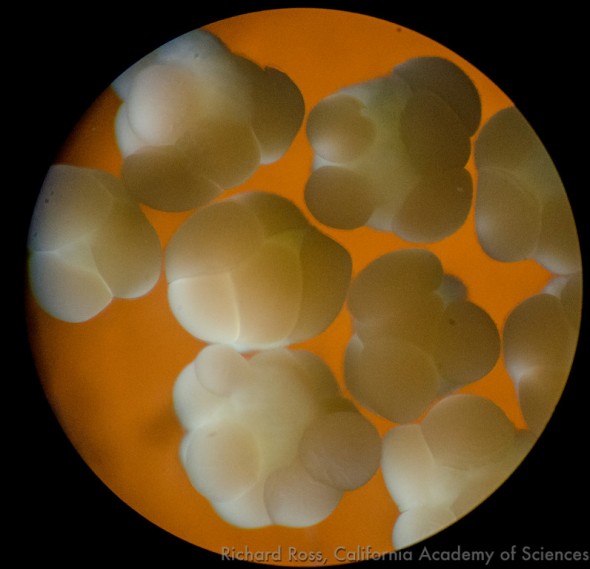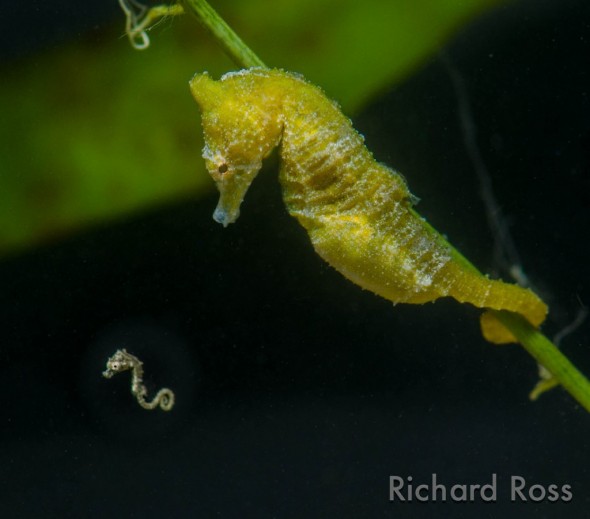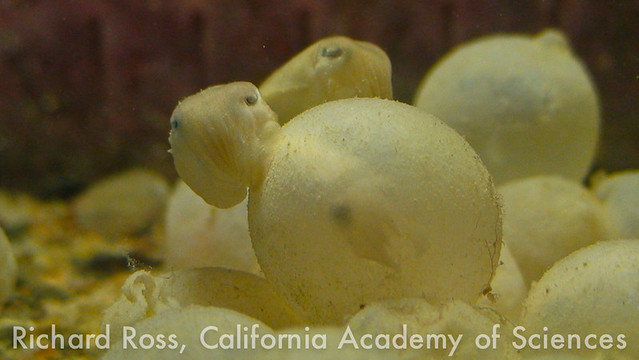Pygmy Seahorses: Masters of Camouflage
By Joshua Cassidy, KQED Science (some footage by Rich Ross)
Alternate copy of video: https://vimeo.com/124145465
Over the summer, biologists from the California Academy of Sciences in San Francisco returned from an expedition to the Philippines with some very rare and diminutive guests, a mating pair of pygmy seahorses. The two tiny fish, each shorter than an inch and bright orange, were collected as part of a larger study of the stunning biodiversity found in the “Twilight Zone” of the ocean. It’s a relatively unexplored environment located at depths where the bright tropical sunlight barely penetrates.
Pygmy seahorses live their entire adult lives attached to a type of coral called a Gorgonian sea fan. The seahorses use their long tails to grab on to the delicately branched sea fans. But what’s really amazing is their ability to match the coral’s bright color and knobby texture. They blend in so perfectly that they are barely visible, even to a trained eye.
More people have walked on the moon than have seen a juvenile land on a sea fan.
Pygmy seahorses are nearly impossible to raise in captivity. More people have walked on the moon than have seen a juvenile land on a sea fan. Until recently, there was no record of the seahorses ever living long enough to breed in an aquarium. As a result, very little is known about them, making them extremely attractive to researchers eager to learn about the mysterious species.
One of the biggest hurdles is keeping the host sea fans alive, since the pygmy sea horses cannot live without them. Biologists Matt Wandell and Rich Ross knew this would be tough, but they had been preparing since 2011 when Bart Shepherd, Director of the Steinhart Aquarium, issued them a challenge. They were tasked with keeping the sea fans alive for three years before they could even attempt bring back the seahorses. (more…)


